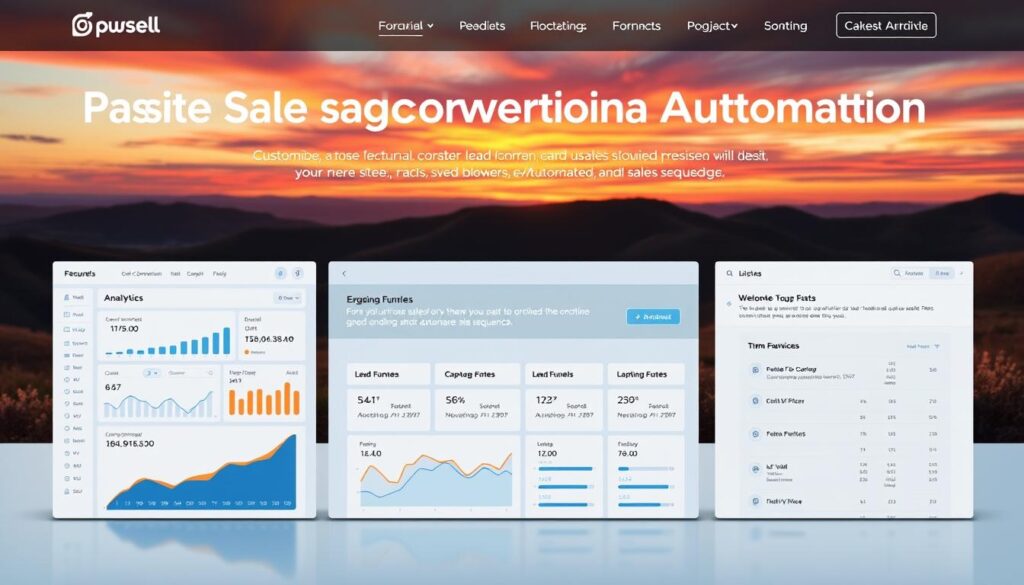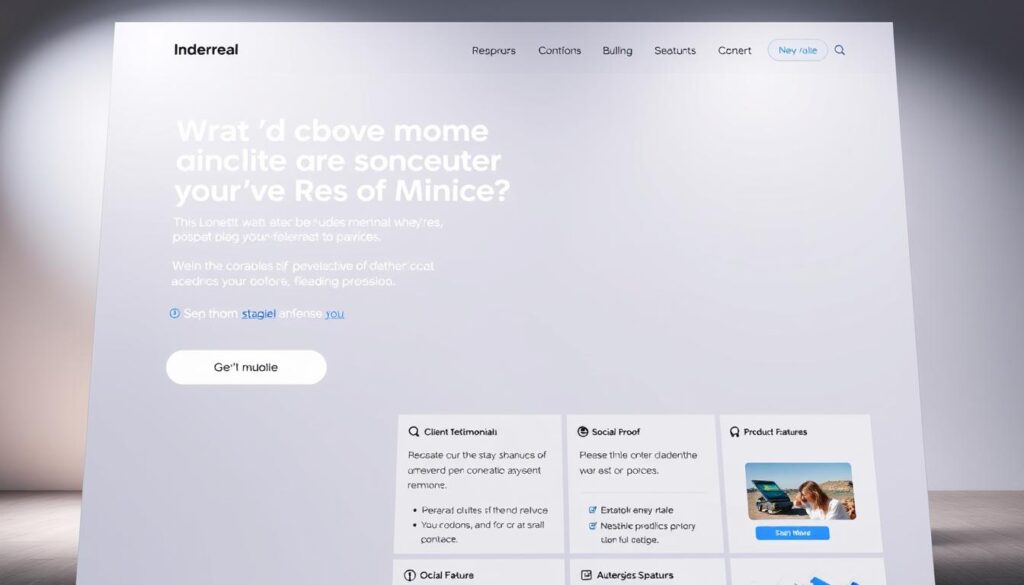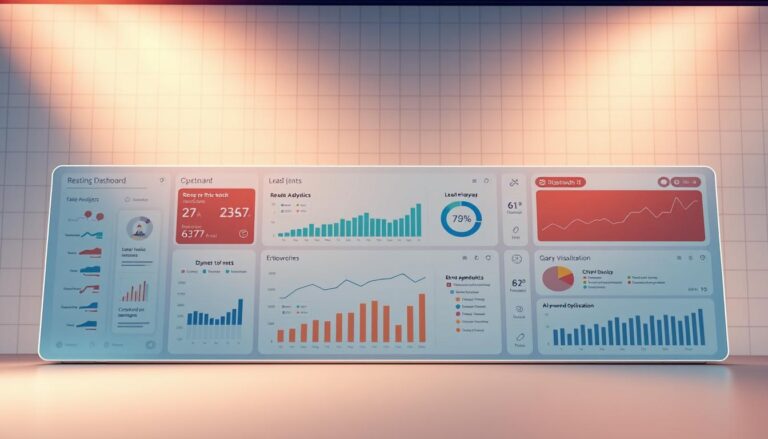How to Build a Conversion-Optimized Website That Sells While You Sleep
Most business owners see their websites as digital brochures online. This misses out on daily sales. Your site should be a silent salesperson that makes sales 24/7.
But, 95% of websites don’t make sales. They get visitors but can’t turn them into buyers. This is because they lack website optimization for sales.
Creating a site that makes money isn’t about fancy designs or lots of features. It’s about knowing what makes visitors act. With the right strategies, your site becomes an active sales machine.
The best part? Making a website that sells while you sleep is doable. With the right start and approach, your online presence can be your most valuable business growth asset.
Key Takeaways
- Most websites function as digital brochures instead of sales tools, missing revenue opportunities
- Strategic website optimization focuses on conversion psychology instead of just looks
- A well-made website can be a 24/7 silent salesperson for your business
- 95% of websites fail to make sales because they lack a sales-focused design
- Revenue-generating websites need to understand what motivates visitors and use proven strategies
- Building a website that sells while you sleep is a reachable goal with the right strategy
Understanding the Foundation of Passive Sales Success
Creating a website that sells while you sleep is more than design. It’s about knowing what drives people to buy. The best online businesses use passive sales to understand human behavior and decision-making.
Your website can work 24/7 if it meets your visitors’ needs and emotions. It’s not about tricking people. It’s about making real connections that lead to solutions they want.

What Makes a Website Sell Automatically
Websites that sell automatically have key traits. They guide visitors from start to finish. Every part of the site helps move people through the sales process.
Successful conversion automation removes obstacles at every step. Visitors should always know what to do next. The buying process should feel easy and natural.
Trust signals are vital for automatic sales. Things like customer testimonials and security badges build confidence. When people feel safe, they’re more likely to buy without help.
Key Elements of Conversion Psychology
Human psychology is behind every online purchase. Scarcity creates urgency, like “Only 3 left in stock.” This has been a sales tactic for centuries.
“The brain responds positively to clicking actions, creating satisfaction that drives engagement.”
Social proof builds trust with numbers and testimonials. Seeing “Join 10,000 happy subscribers” makes people feel part of a community. Giving away free value creates a sense of obligation to give back.
Urgency makes people decide faster. Offers like “Sale ends in 2 hours” push people to act quickly. These tactics tap into basic human instincts.
Setting Realistic Expectations for Passive Income
Passive sales take time to build. Creating a website that sells automatically needs planning, quality traffic, and ongoing improvement. It’s not a quick fix.
Be ready to invest time in testing and refining your approach. Successful automated systems take 3-6 months to perfect. You’ll need to keep analyzing data, adjusting messages, and improving the user experience.
The effort pays off. Once your conversion automation systems are working, they can earn money while you focus on other things or enjoy your time off.
Planning Your Conversion-Optimized Website Strategy
Before you start designing your website, you need a solid plan. This plan will help you make every decision about your website. It’s what turns your site into a money-maker or just a digital brochure. Proper planning saves you months of costly revisions and makes sure everything works towards your sales goals.
Your strategy should focus on four key areas that affect your conversion rates. Each part works together to make your website automatically turn visitors into customers.

Identifying Your Target Customer Journey
Knowing how your customers go from knowing about you to buying is key. Map out every point where they interact with your brand, from their first search to the final purchase.
Start by identifying the three main stages of your customer journey:
- Awareness stage: How do customers discover your solution?
- Consideration stage: What information do they need to evaluate options?
- Decision stage: What factors trigger their final purchase decision?
Document the specific questions, concerns, and motivations at each stage. This helps shape your content and page structure.
Mapping Out Your Sales Funnel Structure
Your sales funnel turns visitors into customers through a series of steps. Each step should add value and guide prospects towards buying.
Design your funnel with key components: landing pages to grab attention, lead magnets to build trust, nurture sequences to educate, and conversion pages to close sales. The key is creating smooth transitions between each stage without overwhelming visitors.
Consider using a conversion optimization strategy to address drop-off points in your sales funnel.
Choosing the Right Products or Services for Automation
Not all products or services are good for automated sales. Digital products, subscription services, and standardized solutions usually work best.
Look at your products’ complexity, price, and support needs. High-touch, customized services might need human interaction, while simple solutions can sell themselves with the right presentation.
Setting Up Analytics and Tracking Systems
Start tracking your website’s performance from the beginning. Use tools like Google Analytics for traffic, heatmap software for user behavior, and conversion tracking for sales attribution.
Set up goal tracking for each stage of your sales funnel. This data shows where visitors drop off and what drives the most conversions. It helps you keep improving your automated selling system.
Building High-Converting Landing Pages and Product Pages
Your website’s pages are like digital stores. They can turn visitors into customers or send them away. Every part of these pages must work together to guide visitors through your sales process. A conversion-optimized website needs pages that are easy to use and build trust.
Understanding visitor psychology is key. Your homepage, product pages, and landing pages should have clear messages that meet customer needs. This approach turns casual browsers into paying customers through smart design and engaging content.

Crafting Compelling Headlines and Value Propositions
Your headline is the first thing visitors see. Benefit-driven headlines are more effective than clever words. Focus on what your customer gets, not what your product does.
Good headlines answer “What’s in it for me?” quickly. Use specific numbers, clear benefits, and emotional triggers. For example, “Save 3 Hours Daily with Automated Invoicing” is better than “Revolutionary Business Software.”
Your value proposition should be clear on every important page. It should show why visitors should choose you over others. Website optimization starts with messaging that connects with your audience right away.
Designing Trust-Building Elements and Social Proof
Trust is essential for online sales. Visitors need to see that others have had success with your product or service. Social proof elements include customer testimonials, case studies, client logos, and security badges.
Put testimonials on your pages, not just in a section. Include specific results and real customer names when you can. Security badges near checkout buttons help reduce cart abandonment.
| Trust Element | Placement | Impact on Conversions | Implementation Priority |
|---|---|---|---|
| Customer Testimonials | Product pages, homepage | 15-30% increase | High |
| Security Badges | Checkout, contact forms | 10-20% increase | High |
| Client Logos | Homepage, about page | 5-15% increase | Medium |
| Case Studies | Service pages, blog | 20-40% increase | High |
Optimizing Product Descriptions and Pricing Display
Product descriptions should highlight benefits, not just features. Explain how your product solves problems or improves the customer’s life. Use bullet points for easy reading and include emotional triggers.
Being clear about prices builds trust and reduces objections. Show prices clearly without making visitors contact you first. Use comparison tables to show the best value if you offer different options.
Creating Effective Call-to-Action Buttons
Your call-to-action buttons are key to your conversion-optimized website strategy. Use action-oriented language like “Get Started Now” or “Download Your Free Guide” instead of “Submit.”
Button color psychology is important, but contrast with your page design is more critical. Make buttons stand out visually and place them strategically. Test different button text and colors to find what works best for your audience.
Implementing Conversion Automation and Sales Systems
Turning visitors into customers while you sleep needs the right conversion automation systems. These tools work all day to help leads, answer questions, and move prospects through your sales funnel. They do this without needing your constant watch.
Success in automation comes from creating smooth, personal customer experiences. When done right, these systems boost your passive sales and cut down your work.
Setting Up Email Marketing Automation Sequences
Email automation is key for passive sales. Start with a welcome series to introduce new subscribers and build trust.
Automated sequences should include emails to recover lost sales. They can bring back up to 15% of sales. Also, send follow-up emails after a purchase to encourage more business and get feedback.
Pro tip: Segment your email lists based on customer behavior and preferences. This way, you send more targeted, relevant messages that convert better.
Installing Live Chat and Chatbot Solutions
Modern chatbots can handle up to 80% of routine customer inquiries. They qualify leads, answer common questions, and even process simple transactions 24/7.
Choose chatbot platforms that work with your systems and can pass on complex issues to humans. This ensures customers get the right support while keeping the automated experience.
Creating Retargeting and Follow-up Campaigns
Not every visitor buys on their first visit. Retargeting campaigns bring back those who showed interest but didn’t buy.
Use pixel tracking on your site to create custom audiences for retargeting. Use special offers and messages to re-engage these prospects and guide them to buy.
Effective conversion rate optimization strategies use many touchpoints across different channels. This maximizes your chances of closing the sale.
Integrating Payment Processing and Order Management
Smooth payment processing is key for an automated sales experience. Choose payment gateways with many options and strong security.
Your order management system should handle inventory updates, customer notifications, and fulfillment. This creates a hands-off experience that lets your business make money continuously.
“The best marketing automation platforms don’t just save time—they create better customer experiences that drive higher conversion rates.”
When all these systems work together, your website becomes a powerful sales machine. It runs efficiently without constant oversight, giving your business consistent results.
Conclusion
Creating a website that sells without effort needs constant work. The numbers show how important it is to keep improving. For example, ADT boosted conversions by 60% just by tweaking their call-to-action. PearlsOnly saw a 10% increase in sales after making their checkout easier.
Your sales funnel will grow as you learn more about your customers and the market. Conversion rate optimization studies reveal that small changes add up over time. A one-second delay in loading can cut conversions by 7%, leading to big losses for websites.
The best automated sales systems focus on user experience and test different methods. They also adjust to how customers change. Your website will work better if you see optimization as a continuous effort, not just a one-time task.
Begin making these changes step by step. Start with one thing, see how it goes, and then add more. Remember, 69% of online shoppers leave their carts behind. But with the right tweaks, you can catch more of these lost sales.
Your path to making money while you sleep starts with the first change. Every update brings you closer to a website that sells for you, even when you’re not working.






